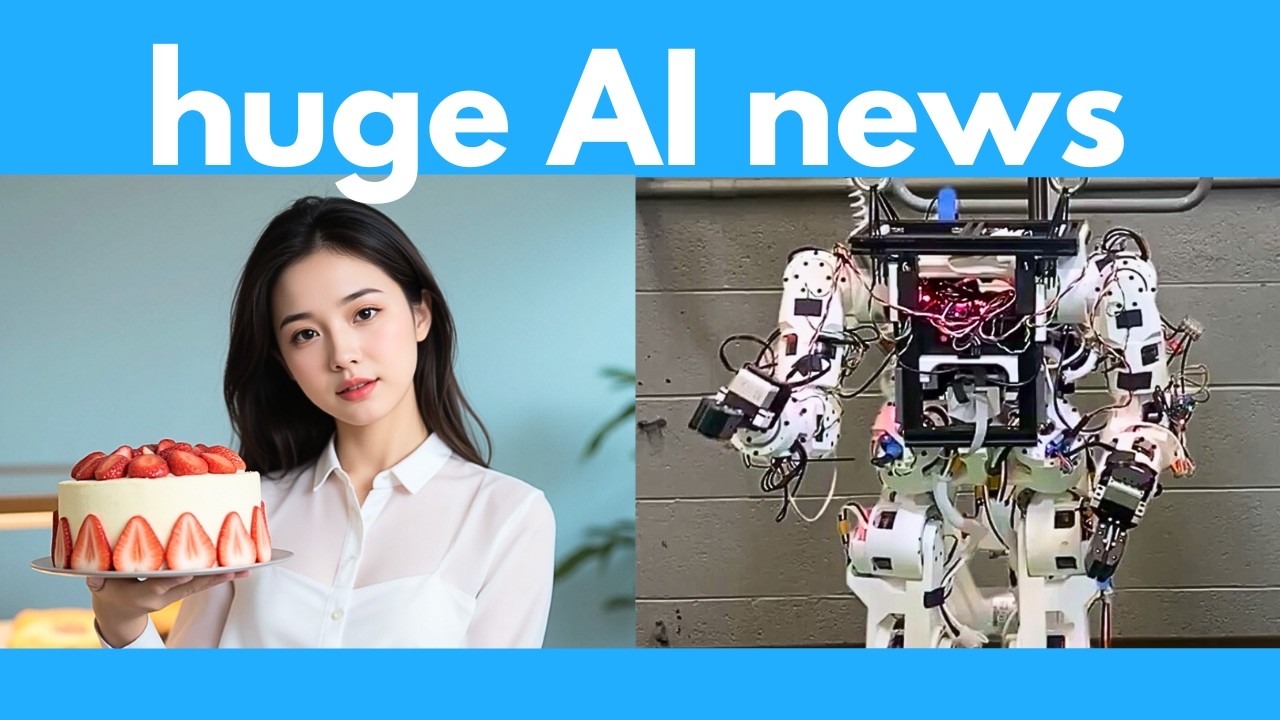The video showcases recent breakthroughs in AI-powered visual content creation, including tools like Dream O for image and video editing, Hollow Time for immersive 4D scene generation, and Flexi Act for realistic character and pose transfer, all emphasizing open-source accessibility. It highlights how these innovations are transforming industries such as entertainment, advertising, and design by enabling highly realistic, customizable, and immersive digital experiences.
The video highlights a surge of exciting AI developments this week, focusing on powerful new tools for image and video editing, scene generation, and character manipulation. One of the standout tools is Dream O, which can create highly accurate images from reference photos and even add or replace characters and objects within videos. It can seamlessly transfer styles, generate images with multiple references, and understand prompts well enough to produce detailed, style-shifted images. The creator has released a demo on Hugging Face and provided instructions for local use via GitHub, making this technology accessible for experimentation.
Another major innovation is Hollow Time, an AI capable of transforming single images or text prompts into immersive 4D scenes suitable for virtual and augmented reality. These scenes are essentially animated 3D environments that incorporate the element of time, allowing users to explore them with VR headsets. It can generate panoramic videos and animate elements like northern lights realistically, all from a single input. The AI uses a two-stage process involving panoramic animation and space-time reconstruction, and the models are open-sourced on Hugging Face, with instructions available on GitHub for local deployment.
Flexi Act is introduced as a remarkable tool for transferring human or animal movements from one video onto another image or different perspectives. It can animate characters, animals, or even complex poses like yoga, regardless of whether they are 2D or 3D. The system preserves consistency across different body types and angles, enabling applications like mapping human actions onto pets or creating realistic character animations. The models are open-source, with detailed instructions on GitHub, though high VRAM requirements currently limit widespread use, but community efforts are expected to optimize it further.
The video also covers Hunyan Custom, a powerful AI from Tencent that can generate or modify videos by adding reference characters or objects with high accuracy. It can maintain character consistency, swap outfits, and even perform lip-syncing with audio. The tool is capable of creating highly realistic scenes and is expected to revolutionize advertising by eliminating the need for actors or videographers. While demanding significant hardware resources now, the open-source community is likely to optimize it for lower-end systems, expanding its accessibility in the near future.
Finally, the video discusses several other notable tools, including LTX Video for fast, high-quality video generation, Pixel Hacker for seamless image editing and background removal, and Primitive Anything for breaking down complex 3D models into simple primitives. Additionally, a new AI called T2IR1 introduces chain-of-thought reasoning into image generation, aiming to produce more accurate and realistic images by planning high-level concepts before rendering. Overall, these advancements demonstrate rapid progress across AI-driven visual content creation, with many tools now open-source and accessible for experimentation, promising a transformative impact on industries like entertainment, advertising, and design.
